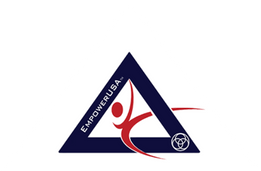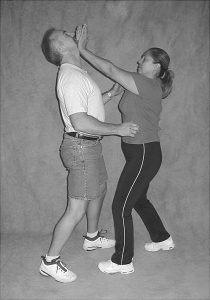Introduction
Before diving into the details of “Why, What & How” I want to define both “personal safety” training and
“self-defense” training. Understanding the differences between these two terms, from my perspective, will
help you to interpret and understand the information provided in this article series more accurately.
Personal safety training focuses on educating the mind – providing information that should help an
individual make better decisions regarding potential or real conflict or violent situations. Some example
subject areas covered in personal safety training should be:
• Why Learn Personal Safety and Self-Defense
• Legal Liability of Self-Defense
• Self-Defense Training’s Impact on Confidence & Fear
• Assailants – Who Are They?
• Preparation For and Understanding the Consequences of Conflict & Violence
• Principles of Personal Safety
• Pre-emptive Self Defense
• Self-Defense Training versus Martial Arts Training
• Self-Defense Training versus Kickboxing Fitness Training
• Awareness (Mental, Emotional, Environmental & Physical) – the Offensive Weapon
• Interpreting Body Language
The words ‘self-defense’ appears frequently in the preceding list of potential personal safety subjects. The
purpose for that is to relate the information to the potential for physical conflict or violence. But there is
no physical skills training included – only education. The purpose of personal safety training is to
enhance the individual’s knowledge to a level that would provide the capability and ability to recognize &
avoid, recognize & effectively deal with, or recognize & exit a potentially violent situation, without the
need for engaging in fighting.
Personal Safety training can be delivered as a live event (in-person seminar or virtual webinar) or it can
be provided in an online format, like other onboarding or recurrent annual training courses (i.e.
harassment training) required for employees. Online course training formats do provide greater flexibility
for both companies and employees, and should include the following:
• A method for employees to ask questions and get relatively quick feedback.
• The content is available 24/7 so there is no need to schedule the training for specific dates or times.
• Content should be available to review at any time, even after completing the course.
• Brief knowledge verification (quizzes, exams) methods.
• Live seminars typically don’t provide this option.
Oftentimes, an online course is more cost-effective for a company. Logistics, cost, availability of
information, and objective verification that the employees gained knowledge from the training – these are
all solid reasons to consider an online Personal Safety training course.
Self-Defense Physical Skills Training
Self-defense training provides the opportunity to learn, practice, and improve the physical skills necessary
for a combative situation. Physical self-defense training does not make a person invincible – it is more of
a “discovery” experience. An individual, through the training progressions, discovers what he or she is
capable of, if confronted with potential violence. This newly discovered knowledge and awareness of
physical skill abilities and capabilities can improve the decision-making process during a confrontation.
Some example subjects that should be included in a self-defense physical skills training are:
• Distancing & Personal Space
• Skill Performance Conditioning
• Self Defense Stance
• Evasion Movements
• Re-Direction & Blocking Techniques
• Striking – Primary Target Areas
• Striking – Elbow Strikes, Palm Heel Strikes, Knee Strikes, Front Kicks, Side Kicks
• Loosening Technique Target Areas
• Loosening Techniques for Grabs & Holds (chokes, shoulder grabs, bear hugs, etc.)
• Ground Fighting
• Multiple Attackers, and more!
Now, as you read the succeeding articles in this series, you will understand the differences between
personal safety training and self-defense training. However, there is a “gray” area where education about
physical skills training can be provided during personal safety training – it would be informational only,
no physical skills practice time. I include that “gray” area in my personal safety training. A few examples
of what I educate my participants about include the following:
• The right way versus the wrong way to perform evasion movements.
• The pros and cons of each kind of strike.
• Primary target areas for strikes.
• Primary targets areas for loosening techniques.
• Everyday items that could be potentially used as a self-defense weapon.
• How to use those weapons.
• And much more!
It is time to move on to the next article that provides answers to “Why” a company or organization should
provide personal safety, and possibly self-defense training for employees or members.
Remember,
“ONE BODY, ONE LIFE, ONE CHOICE – BE SAFE & STRONG!”




